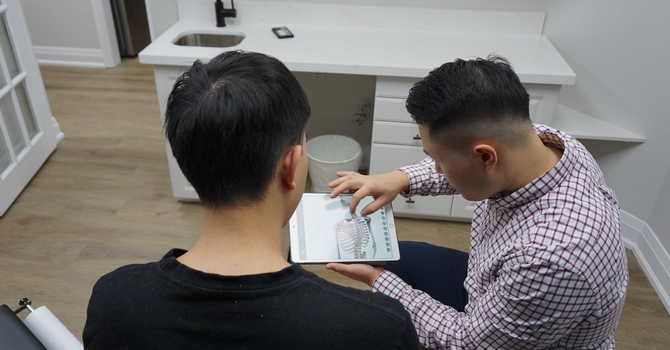
Written by Vicky Liu, 4th year Health Sciences co-op student from the University of Waterloo.
While some couples aim to avoid pregnancy, others are investing thousands of dollars in their pursuit of conception. In fact, according to the World Health Organization, around 1 in 6 people experience infertility. Infertility is defined as the incapacity of a couple to achieve pregnancy after a year of unprotected intercourse. In the past, adoption was often the only option for infertile couples seeking to have children, but significant advancements in reproductive medicine since the 1970s have expanded options. Consequently, numerous infertile couples can now realize their dream of becoming parents.
Infertility can arise from issues in either the male or female partner. Occasionally, both partners may face challenges that contribute to their infertility. A potential complication involving both partners is the development of antibodies in the woman against her partner's sperm. Generally speaking, male infertility results from factors such as low sperm counts, irregularities in the structure of the sperm, or abnormalities in the reproductive structures that are responsible for transporting sperm. On the other hand, female infertility may stem from disruptions in hormonal pathways governing the maturation and release of eggs, or abnormalities in reproductive structures such as the cervix, uterus, Fallopian tubes, and ovaries. As a result, not all pregnancies progress to a successful conclusion, with some estimates suggesting that up to a third of all pregnancies spontaneously end—many within the initial weeks, often before the woman is even aware of her pregnancy.
Remarkable progress has been achieved in the realm of assisted reproductive technology (ART), encompassing techniques that involve the manipulation of both sperm and eggs. In the case of in vitro fertilization (IVF), a woman's ovaries undergo hormonal manipulation to stimulate the simultaneous release of multiple eggs. Subsequently, these eggs are surgically retrieved and fertilized externally. The developing embryos are then transferred to the woman's uterus, which has been prepared for pregnancy through hormonal therapy. Given the intricacy and cost of the procedure, it is common to implant multiple embryos into the uterus simultaneously, potentially leading to the occurrence of multiple births. In addition, IVF can increase the risk of ovarian hyperstimulation syndrome (OHSS), which enlarges the ovaries and causes abdominal pain.
But what if we told you that there are less invasive and low-risk ways to boost your fertility? Several studies have shown that complementary and integrative medicine, such as acupuncture and nutritional treatments, can improve fertility and reproductive health. In a study of 232 women, a higher folate intake was linked to higher rates of implantation, clinical pregnancy, and live birth. Moreover, acupuncture has been shown to be effective in restoring patients' fertility by enhancing the quality of their sperm and the function of their ovaries, as well as by balancing their hormones and endocrine system.
Embarking on a fertility journey can be a deeply personal experience, and finding the right treatment options tailored to your unique needs is crucial. To explore personalized pathways to parenthood, book a complimentary consultation with our experienced naturopath, Dr. Wendy, and our knowledgeable acupuncturist, Olivia Chen. This consultation offers a valuable opportunity to discuss your specific situation, understand available treatment options, and receive guidance on the most suitable approach for your fertility goals. Taking this first step can provide clarity, alleviate concerns, and set you on a path toward informed and personalized fertility care. Your journey matters, and we're here to support you every step of the way.
References
-
Gaskins, A. J., Afeiche, M. C., Wright, D. L., Toth, T. L., Williams, P. L., Gillman, M. W., Hauser, R., & Chavarro, J. E. (2014). Dietary Folate and Reproductive Success Among Women Undergoing Assisted Reproduction. Obstetrics and Gynecology (New York. 1953), 124(4), 801–809. https://doi.org/10.1097/AOG.0000000000000477
-
Kumar, P., Sait, S. F., Sharma, A., & Kumar, M. (2011). Ovarian hyperstimulation syndrome. Journal of human reproductive sciences, 4(2), 70–75. https://doi.org/10.4103/0974-1208.86080
-
Silverthorn, D. U., Johnson, B. R., Ober, W. C., Ober, C. E., Impagliazzo, A., & Silverthorn, A. C. (2019). Human physiology : an integrated approach (Eighth edition.). Pearson Education, Inc.
-
World Health Organization. (2023, April 4). 1 in 6 people globally affected by infertility: WHO. https://www.who.int/news/item/04-04-2023-1-in-6-people-globally-affected-by-infertility
-
Zhu, J., Arsovska, B., & Kozovska, K. (2018). Acupuncture Treatment for Fertility. Open Access Macedonian Journal of Medical Sciences, 6(9), 1685–1687. https://doi.org/10.3889/oamjms.2018.379

HealthyToDos Inc.
Contact Me


